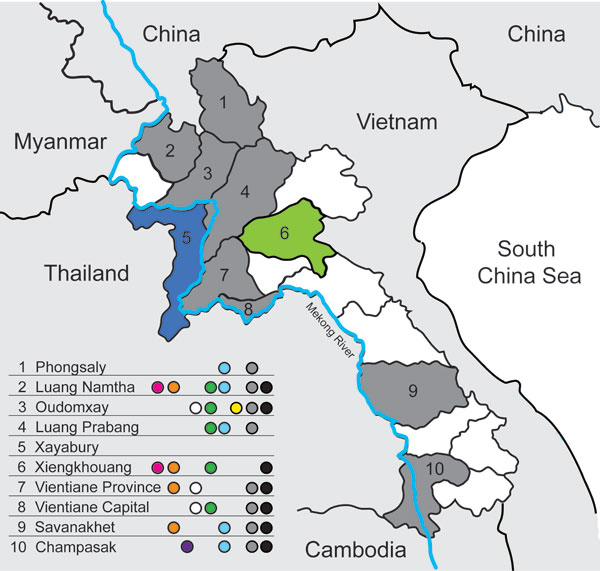Volume 18, Number 7—July 2012
Dispatch
Multiple Introductions of Avian Influenza Viruses (H5N1), Laos, 2009–2010
Figure

Figure. . Areas sampled and location of subtyped avian influenza viruses (H5N1), Laos, 2009–2010. Provinces that had previous outbreaks of highly pathogenic avian influenza and were part of the survey are indicated in gray, the province that had a previous outbreak but was not part of the survey is indicated in blue, and the province that had not had an outbreak but was part of the survey is indicated in green. Colored dots indicate presence of viruses: light blue, anti-H5 (clade 2.3.4); gray, anti-H9 lineage G1; red, clade 2.3.4.1; orange, clade 2.3.4.2; green, anti-H5 (clade 2.3.2); black, anti-H9 lineage Y280; white, anti-H4; yellow, anti-H6; purple, clade 2.3.2.1 or virus-specific antibodies.
Page created: June 18, 2012
Page updated: June 18, 2012
Page reviewed: June 18, 2012
The conclusions, findings, and opinions expressed by authors contributing to this journal do not necessarily reflect the official position of the U.S. Department of Health and Human Services, the Public Health Service, the Centers for Disease Control and Prevention, or the authors' affiliated institutions. Use of trade names is for identification only and does not imply endorsement by any of the groups named above.